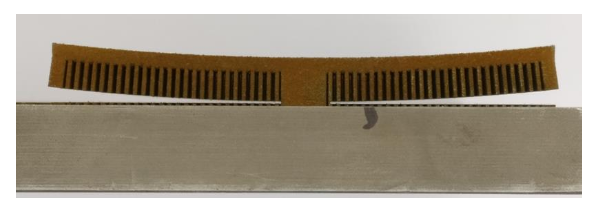Ecoplus Plastics and Mechatronics Cluster in Lower Austria has just completed their ‘AM 4 Industry’ Cornet project, outlining their findings regarding 3D printing—with the recently published work serving as the culmination of a large group of research partners and fifty-one companies (from Austria, Germany, and Belgium) working together on ‘industrial AM concepts’ for two years.
Begun in November of 2016, this ongoing research was funded with 2.1 million euros, and is comprised of the following organizations:
- Research Institute for Rationalization (FIR) of the RWTH Aachen University
- Research Subsidiary of FH Wiener Neustadt
- Fraunhofer Institute for Casting, Composite and Processing Technology
- Institute for Polymer Injection Molding and Process Automation of the Johannes Kepler University Linz
- Chair of Polymer Processing of the University of Leoben
- RHP-Technology GmbH
- Belgian Collective Center for the technological industry – Sirris
Noting that 3D printing and additive manufacturing processes are becoming increasingly more popular around the world by users on every level, the researchers found that it is having impacts on industrial production, and often allows designers and engineers to create parts and prototypes made up of complex geometries—ones that may not have been possible with conventional techniques. New mechanical properties and functionality may be added to components also.
It is no secret that while 3D printing offers a host of advantages and the ability to offer infinite new designs and innovations, many companies are still not ready to completely embrace additive technologies, breaking free from traditional methods.
For those already using AM processes, some may be reaping the rewards by enjoying profitable results, while others have trouble in attempting to learn and use the technology. The researchers pointed out that users must understand the following:
- Processes
- Materials
- Finishing
- Quality assurance
- Cost-benefit ratios
Industrial applications also require:
- Definition of quality characteristics
- Development of methods for design and construction
- Reliable monitoring of production processes
- Suitable guidelines for reworking
- Appropriate cost-benefit model
Cooperation between all entities on the research project was ‘intensive’ and it has now been deemed ‘successfully completed.’ Results were so extensive that they were separated into five different publications for practice and research.
The five publications include: a catalog of errors for laser beam melting, a practical design methodology for additive manufacturing, a fundamental study of processes, a tool for quality optimization and cost analyses and an application-oriented example for getting started with OpenFoam and chtMultiRegion.

Residual stresses become apparent during separation from the building plate (post-process), as discussed in Project report – AM 4 Industry – LBM Additive Manufacturing Defect Catalogue

Concerns over tool accessibility during machining, which reduces the achievable geometric complexity – as discussed in ‘Design for Additive Manufacturing A feasable methodology’
“Thanks to the expertise and the committed and open-minded cooperation of the partners involved, we were able to develop several methodologies and guidelines that will prove to be extremely relevant for the industry,” said ecoplus project manager Benjamin Losert.
Find out more about the Cornet research here.
3D printing continues to offer benefits to a long list of fields today, allowing medical professionals to make huge strides with medical devices and implants, aerospace engineers to expand functionality and design of rockets, and so much more. What do you think of this news? Let us know your thoughts! Join the discussion of this and other 3D printing topics at 3DPrintBoard.com.
[Sources: Additive Manufacturing Association Austria; Images: AM 4 Industry ]Subscribe to Our Email Newsletter
Stay up-to-date on all the latest news from the 3D printing industry and receive information and offers from third party vendors.
Print Services
Upload your 3D Models and get them printed quickly and efficiently.
You May Also Like
Consolidation in AM: How 2025 Is Shaping the Industry’s New Normal
The first half of 2025 has been marked by a clear shift in the additive manufacturing (AM) industry. Companies are no longer just focused on developing new tech by themselves....
Etsy Design Rule Change Reduces Selection of 3D Printed Goods
Online marketplace Etsy has implemented a rule change requiring all 3D printed goods on the site to be original designs. The update to the site’s Creativity Standards states, ¨Items produced using...
U.S. Congress Calls Out 3D Printing in Proposal for Commercial Reserve Manufacturing Network
Last week, the U.S. House of Representatives’ Appropriations Committee moved the FY 2026 defense bill forward to the House floor. Included in the legislation is a $131 million proposal for...
Transforming From Tourist to Native: Duro CEO Michael Corr Explains Why the Company Rebuilt its PLM Software on AI
In these early innings of the AI boom, many market analysts have expressed concern that AI spend has gotten too far ahead of the technology’s proven ability to deliver significant...

































